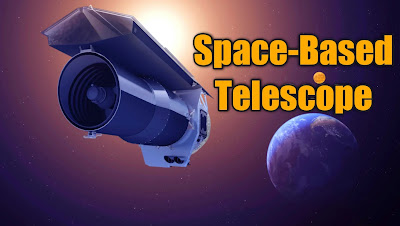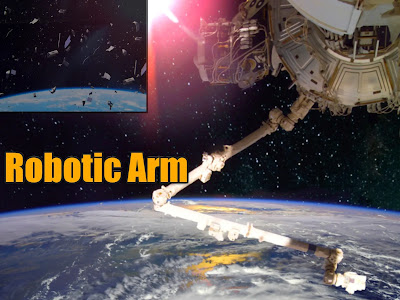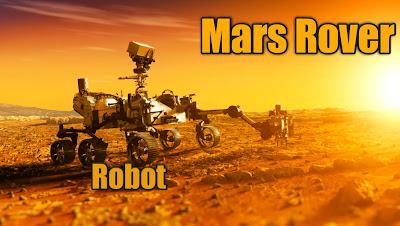5 Great Student Hackathon Projects On Space Technology: Studying Outer Space
There are a lot of great student hackathon projects on space technology. While most of your ideas probably won't become a reality, here are 5 of the best projects from those who have dared to dream big. These students, from various prestigious universities around the globe, have dabbled with everything from asteroid mining to robots that can explore the surface of Mars.
Blog List:
- An asteroid-mining robot
- A space-based telescope for detecting exoplanets
- A robotic arm for picking up space debris
- A "space elevator" which can be used to launch satellites
- The Mars Rover, a robot that can explore the surface of mars
{tocify} $title={Table of Contents}
1. An asteroid-mining robot
An asteroid-mining robot has been launched into space by a company called Planetary Resources. The robot is designed to capture space rocks and bring them closer to Earth.
The Venus Atmospheric Maneuvering Platform seems like a mission that would be boring at best if given a second glance. After all, if you have one of these as a hobby or as part of a space program, what's the point? The point is that something this crazy/cool exists. This is (obviously) serious business:
It looks like a standard piece of space hardware. Yet, down the mission control rabbit hole, it's not at all what it seems. On Earth, layers of bureaucracy and bureaucracy-ing take their toll on pretty much everything. In space, by contrast, once something is taken seriously and put into action, it collapses layers and levels and leaves only a glorious mission.
Because the above example is absolutely ridiculous in its own right, let me make it even weirder: Venus is the only planet that ever has to worry about small, near-substantial rocks hurtling toward it instead of hurtling away from it.
It's the thought that counts
It's easy to dismiss Venus Atmospheric Maneuvering Platforms (VAMPs) as nothing more than an amusement piece implied to be a mission that might work, but the execution is terrible. Aesthetics are easy to dismiss, but aesthetics don't determine how good something is.
There are mission designers and mission operations pros who have dedicated their lives to driving brutal mission design chains to death with mediocre results to make something "cool" happen, only to strategize on and execute a boring/disappointing mission afterwards. Of course, nothing excites me more than an idea driven to ludicrously impractical levels of success. Except...
Venus is different. No one who has ever attempted a VAMP has ever complained about it.
2. A space-based telescope for detecting exoplanets
The James Webb Space Telescope (JWST) is a large, infrared-optimised space telescope whose development is scheduled to be completed in 2018. From Earth's orbit, it will provide images of the first galaxies ever formed, and explore planets around other stars in the hope of finding some which harbor life.
It's a rocket ship. It's fast. And that means even your high-fidelity headphones might get in the way.
Buckle up.
The truth about headphone port choices
A pair of high-quality headphones at play on Earth will offer vastly different levels of sound depending on where they're plugged into. The same goes for laptops on Mars or spaceships on other planets.
One headphone port on the right represents a 50% decrease in tonal and instrumental refinement. Gone are the mighty bass frequencies you'll hear in a recording studio or mastering studio. There's only room for bass on one side. And worst of all, you're likely missing out on something glorious.
But there's also a clever way to find out which headphones are particularly tuned for your space mission: keep your space flight brief.
The headphones at play as you read this may well sound fantastic —which is awesome!—but you're probably a hundred million miles from Mars. So what kind of sound do headphones on Earth offer you?
Scanning through space news is an exercise in translating. It's not unusual for the HeadRoom modes in a few big headphones to sound equal from Mars (because nothing ever sounds equal, btw.
Read More Details: The Future of Vaccines: Nanotechnology
3. A robotic arm for picking up space debris
A company called Astroscale, a Singapore-based space debris-mitigation startup, has created a robotic arm it hopes will help clean up the litter in Earth's orbit. The "E-Deorbit" satellite captures space junk and brings it back down to Earth, where it burns up in the atmosphere.
2. Minecraft's Android-Based Robots Around the globe, hexapods are assembled by communities of makers. These can dismantle and rearrange classic Atari games. The same ambition applies to bots, Facebook's semi-autonomous humanoid robots, that Facebook unveiled at the Facebook Developer Conference in April. These are composed of just 10,000 individual bots interacting across fewer than 300 miles of wireless territory.
3. Yale's Fab 5 Messaging Robots Are Now Available to the Public Without any high-profile celebrities or even a bit of hype, this activity-first graduate robot's story has begun making waves. While other projects have attempted to build passive student robots, this project compellingly combines setup and learning with active learning via voice commands, visual recognition, and adaptive responses to the environment.
4. Digital Plastic Chip Makes PPG (Photorealistic) 3D Graphics More Realistic The WaveNet AR rendering system is intended to replace photorealistic 3D graphics for entertainment purposes. Producing realism requires imitating the real world at every step of the way, and it will be difficult to achieve so using purely computer-based techniques; hence the need for hybrids involving advanced photogrammetry, digital decoration, and game-making systems. Several interesting companies have started producing such hybrids.
5. aROiO Moving Portable Phone Makes Paid Virtual Courses Easier to Take With You Part of a suite of services called aROiO, the NASA-funded device costs just $249 and weighs just over a pound (about half that of a flip phone). It possesses the same processing power as a standard smartphone but can communicate and work with a grade school-standard textbook, a powerpoint presentation, and games.
4. A "space elevator" which can be used to launch satellites
A space elevator is a theoretical structure that would transport people or payloads from a planetary surface to space. It is proposed as a means of transportation to space that would be more cost-effective and less complicated than other methods.
2. Cuillin in the Sky This concept envisions placing a dense metallic core from which an aeroshell mass is suspended, encasing the traveler in a protective solar atmosphere.
Before we get to the fun part of the wedding planning event, here are a few more interesting concepts on how to plan your wedding.
3. Space Wreath Bells Both Formica and plastic patio furniture are assets that could be substituted for traditional wedding office chairs.
4. Diabetes Applies to Space By implanting TIBI cells patterned after those found in the human GI tract, astronauts could be cured of both diabetes and the flu. (Source)
5. Carriage Back to Earth In a less-than-glamorous future where Breaking Bad has passed, the national zeitgeist, palace weddings involving two Beyoncees are still popular, but only for the very wealthy.
6. NASA Biometric Identification System for Astronauts This project would monitor astronauts to ensure their diet and exercise are up to par for the rigors of deep space exploration.
7. Create an LEAP-1 Rocket. This floating, reusable space station would be covered in solar panels and contain a self-contained warp core that supplies the cells needed for space flight.
8. HoloBooth for Dressed Robes The goal of HoloMachines is to develop a fully functional space environment for tourists, by melding three-dimensional computer graphics with high-dimensional clothing.
9. Sleeping Beauty Years and Mickey Mouse Space Boots This might be the craziest idea ever that involves Mickey Mouse pajamas the size of space boots.
10. Space Opera and the Star Trek Computer The concepts of Type-A and Type-C personalities are being applied to the space program.
5. The Mars Rover, a robot that can explore the surface of mars
A Mars Rover is a robot that is designed to explore the surface of Mars. A Mars Rover can be controlled remotely by scientists on Earth or it can be programmed to make its own decisions about where to go and what to do. Mars Rovers are equipped with cameras, sensors, and other instruments that allow them to learn about Mars.Any intelligent robot being programmed to explore the surface of another planet would be inspired by the amazing technology of the Venus Atmospheric Maneuverable Platform. It is a recovery vehicle that was redesigned for Mars.
A Venus Atmospheric Maneuverable Platform has a mass of 5,726 pounds and is 9.2 meters long with a diameter of 2.6 meters.
The Venus Atmospheric Maneuverable Platform is primarily driven by a 600 horsepower gas-electric hybrid motor. The top speed of the predecessor was approximately 16 mph with a top maximum torque of 9,000 pounds. The current iteration is a 2,780-pound gas-electric hybrid generating 50.6 kilowatts of power. It can go up to 25 mph and travel as high as 25-30 mph for up to 12 seconds before retiring for the day.
LVAPs are recovered at nearly 400 miles per hour and land via parachute. The recovery program begins straight away by ensuring the robot has a usable body and is then assisted by a hovercraft, helicopter, and lander.
PSM (Powered Self-Maneuvering) is the name given to the stabilization system and software that controls it. The DigitalOVR Control Software can perform tasks like changing the angle of the planetary rotation to adjust for favorable landing conditions like terrain, rain, and sand. The software is also provided with non-manual options (like tending to ship debris out of the wheel).
DAHGS (Dead Soil Gravity Sensing) is the key system that gives the Venus Atmospheric Maneuverable Platform the capability to continue on a course without autopilot and continue sensing the environment around it to understand what course to take.
Conclusion: The possibilities are endless regarding space technology, which makes it a great idea for a student hackathon project. You can learn about high-tech equipment, work with professionals in the field, and have fun while doing it!
Read More Details: Blockchain.com: The ‘Ethereum’ of the Financial Industry











0 Comments